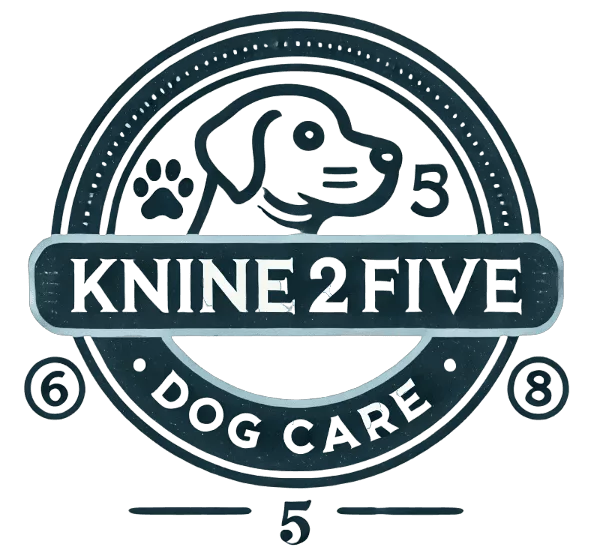Pomeranians are often called the worst dogs. Their fluffy coats hide a bundle of challenges. These tiny pups need lots of grooming, training, and health care. 3 They bark a lot and can be hard to live with in small spaces. Many people think they’re cute, but owning one is tough work. 1 Additionally, their spirited nature makes them prone to exhibiting big black dog characteristics, such as boldness and a strong protective instinct. While they may try to assert themselves, it’s essential to establish consistent boundaries to ensure a harmonious relationship. Despite these challenges, dedicated owners can find joy and companionship in these lively little dogs, provided they are willing to put in the necessary effort.
Our team of vets and dog trainers knows Pomeranians inside out. We’ve seen the good, the bad, and the fluffy. We are well-versed in common dog health concerns that Pomeranians may be prone to, such as dental issues, luxating patellas, and tracheal collapse. With our guidance, you can ensure that your Pomeranian receives the proper care and attention to live a long and healthy life.
Ready to learn the truth about these adorable pompoms? We can help you navigate through their stubbornness and high energy levels, and guide you in establishing a strong and loving relationship with your Pomeranian.
Key Takeaways
- Pomeranians need lots of grooming, which costs $50 to $100 per visit and about $200 yearly for supplies.
- Training Poms is hard due to their stubbornness. They need early socialization from 3 to 12 weeks old.
- These dogs face health issues like knee problems, heart disease, and tracheal collapse. Vet bills can be high.
- Poms bark a lot and can have unstable moods, causing stress for families and neighbors.
- They may not suit busy lifestyles or small spaces due to their need for attention and tendency to bark.
The Financial and Time Investment of High Grooming Needs in Pomeranians

Pomeranians need a lot of grooming. Their fluffy coats take time and money to keep neat.
Regular Grooming Sessions: Necessary but Costly
Pom owners face high costs for grooming. These fluffy pups need pro care every 4 to 6 weeks. Baths, brushing, and nail trims add up fast. At-home care helps, but you’ll still need tools and time. 2
A well-groomed Pom is a happy Pom, but it comes at a price.
Pro groomers charge $50 to $100 per visit for Poms. Their thick coats need special care to avoid mats. Daily brushing at home is a must. You’ll spend about $200 yearly on brushes, shampoos, and other supplies. 1
At-Home Grooming Challenges
Grooming a Pom at home can be tough. Their fluffy coat needs daily brushing to stop mats. 3 You’ll spend lots of time on their ‘frill’ – the thick fur around their neck and chest.
It’s hard work! Many owners opt for a short haircut to make it easier. But be careful – cutting too close can harm the undercoat. You’ll need special tools like slicker brushes and metal combs.
These can be pricey. Plus, you must learn how to use them right. Bathing a Pom isn’t simple either. Their thick fur takes ages to dry. 4 If not dried fully, they can get skin problems.
The Hidden Costs of Grooming Supplies
Pomeranian grooming costs more than you think. You need special tools for their fluffy coat. Pin brushes, slicker brushes, and combs are must-haves. These items can cost $20 to $50 each.
Don’t forget shampoos, conditioners, and detanglers. They run about $10 to $30 per bottle. You’ll also need nail clippers, ear cleaners, and toothbrushes. These extras add up fast. 5
Your Pom’s dental care is crucial. Tooth brushes and dog toothpaste are weekly needs. Dental chews and water additives help too. These products cost $5 to $20 each month. Over time, these hidden costs can strain your budget.
Next, let’s look at the challenges of training these cute but stubborn pups. 6
The Challenge of Training and Socialization in Pomeranians

Pomeranians can be tough to train. They need lots of patience and time to learn good habits.
Overcoming Stubbornness During Training Sessions
Training stubborn Pomeranians takes patience and skill. These fluffy pups often resist commands or get distracted easily. To beat this, use short, fun sessions with lots of treats.
Break tasks into small steps. Praise your dog for each win. Stay firm but kind. Don’t give up if your pom doesn’t listen right away.
Consistency is key when training a stubborn Pomeranian, says expert dog trainer Jane Smith. 8
Positive methods work best for these smart dogs. Avoid yelling or punishment. Instead, make training a game. Use toys and treats to keep your pom’s interest. Stick to a routine. Practice every day, even for just 5 minutes.
This helps your dog learn faster. Next, we’ll look at why early socialization matters for Pomeranians. 7
The Importance of Early Socialization
Early socialization shapes your Pomeranian’s future. From 3 to 12 weeks old, your pup learns key social skills. 9 This time sets the stage for how they’ll act as adults. Expose your Pom to different people, pets, and places.
It helps them become friendly and confident. Positive experiences now lead to a well-adjusted dog later.
Proper socialization prevents fear and aggression. Take your Pom to puppy classes. Let them meet new friends in safe spaces. Reward good behavior with treats and praise. This builds trust between you and your pup.
A well-socialized Pomeranian fits better into family life. They’re less likely to bark at strangers or new things. 10
Addressing Separation Anxiety Through Training
Early socialization helps prevent separation anxiety. But some Poms still struggle when left alone. You can train your pup to be okay by himself. Start with short periods apart. Leave for a few minutes, then come back.
Slowly increase the time away. Give your dog a special toy when you go. This creates a positive link to your absence. 11
Use crate training to make a safe space. Make the crate comfy with blankets and toys. Feed meals in the crate. This builds good feelings about it. Never use it as punishment. Stick to a routine when you leave.
Stay calm – don’t make a big fuss. Your Pom will learn that you always come back. 12
Dealing with Pomeranians’ Susceptibility to Health Issues

Pomeranians face health risks like luxating patella and tracheal collapse. Want to learn more about keeping your fluffy friend healthy? Keep reading!
Common Genetic Health Problems in Pomeranians
Poms face some tough health issues. Their small size makes them prone to dental problems. You need to brush their teeth often to keep them healthy. These fluffy pups can also get knee troubles called patellar luxation. This makes their kneecap slip out of place. It can cause pain and limping. 13
Heart disease is another worry for Poms. Some are born with a heart problem called Patent Ductus Arteriosus. This may need medicine or surgery to fix. Tracheal collapse is also common in these tiny dogs.
It makes breathing hard for them. Regular vet check-ups help catch these issues early. With good care, you can keep your Pom happy and healthy for years. 14
The Cost of Health Care Over a Pomeranian’s Lifetime
Pomeranians need lots of health care. Vet bills can add up fast. You’ll spend money on shots, check-ups, and tests. These tiny dogs often have health issues that cost more to treat.
Dental problems are common and fixing them isn’t cheap. 14 Some Poms get a disease called hypoadrenocorticism. It needs ongoing care with IV fluids and meds. This can be very pricey over time. 15
You should plan for these costs before getting a Pom. Put money aside each month for vet care. Look into pet insurance to help with big bills. Regular check-ups can catch problems early. 14 This may save you money in the long run. Keep your Pom at a healthy weight and brush their teeth. These steps can help avoid some health issues and costs.
The Fragility Factor: Handling with Care
Health care costs for Pomeranians can add up fast. But their fragile nature needs extra care too. These tiny pups can get hurt easily.
Falls or rough play can cause serious harm to Pomeranian puppies. Bigger dogs might injure them by accident. You must watch your Pom closely around others. Handle them gently and teach kids to be careful too.
Their small size makes them easy to drop or step on. Keep them safe from high places and rough games. 15
This article will cover the most common Pomeranian health problems and how you can help prevent them by providing your pup with proper care. 14
Behavioral Concerns: Excessive Barking and Unstable Temperaments

Pomeranians can be noisy and moody. Their barking and mood swings can make life hard for owners and neighbors.
Understanding and Managing Excessive Barking
Poms often bark a lot. They do this when they feel scared, bored, or want to protect you. This can be a big problem, especially if you live in an apartment. You need to find out why your dog barks so much.
Is it scared? Bored? Trying to guard you? Once you know why, you can fix it. 16
You can stop too much barking in a few ways. First, give your dog plenty of exercise and play time. This helps with boredom. Next, teach your dog the “quiet” command. Use treats to reward silence.
If barking keeps up, talk to a vet or dog trainer. They can give you more tips to help your noisy pup. 17
The Impact of Unstable Temperaments on Family Dynamics
Pomeranians can shake up family life with their moody behavior. These tiny pups often have big attitudes that affect everyone at home. They may snap at kids or bark at guests, causing stress.
Their unpredictable nature can make daily routines hard. You might find yourself always on edge, trying to keep the peace. 18
Families need to adapt to a Pom’s quirks. This means setting clear rules and sticking to them. It also means teaching kids how to interact safely with the dog. Patience is key as you work through tough moments.
A Pom’s temperament can test relationships, but it can also bring families closer as they learn to handle challenges together. Next, let’s look at how Pomeranians interact with strangers. 19
Navigating Suspiciousness Towards Strangers
Poms can be wary of new people. This trait stems from their loyal nature. You need to socialize your pup early. Expose them to different folks, places, and sounds. Positive meetings help build trust. Reward calm behavior around strangers with treats and praise. 20
Teach your Pom to obey commands like “sit” and “stay”. These help manage their reactions to new faces. Always supervise interactions between your dog and unfamiliar people. Let your Pom approach others on their own terms.
Don’t force meetings. With time and patience, your fluffy friend can become more open to new folks. 19
Pomeranians: Not Always the Best Dog for Every Lifestyle

Pomeranians need a lot of care and attention. They might not fit well with busy lifestyles or homes with young kids.
Adjusting Expectations: Compatibility with Owner Lifestyles
Poms need a lot of time and care. They don’t fit every home. These tiny dogs need daily grooming and lots of attention. You must have time to brush their coat and play with them often.
If you work long hours, a Pom might not be right for you. They can get sad when left alone too much. 21
Your lifestyle matters when getting a Pom. Do you live in a small space? Poms can do well in apartments. But they bark a lot, which might bug your neighbors. Are you active? Poms need short walks, not long runs.
Think about your daily routine before getting one. Next, let’s look at living with a Pom in small spaces. 22
The Reality of Living with a Pomeranian in Small Spaces
Living with a Pomeranian in a small space can be tough. These tiny dogs have big voices. They bark a lot, which can bug your neighbors. In an apartment, their loud yaps echo more. You’ll need to train them to be quiet. 23
Poms also need room to play and run. Small spaces limit this. You must take them out often for exercise. Their fur sheds a lot too. In a tiny home, you’ll see hair everywhere. Daily brushing helps, but it’s extra work in close quarters. 24
Next, let’s look at how to weigh the pros and cons before choosing a Pomeranian.
Weighing the Pros and Cons Before Choosing a Pomeranian
After thinking about small spaces, you must weigh the pros and cons of Pomeranians. These dogs are easy to train and eager to please. This makes them good for new dog owners. But they need proper training to manage their bold behavior.
Poms can be sassy without guidance. 25
You should think about your lifestyle before getting a Pom. They need daily grooming and exercise. Poms also bark a lot, which might bother neighbors. On the plus side, they’re loving and fit well in apartments.
Consider these facts carefully to decide if a Pomeranian is right for you. 24
Conclusion
Pomeranians bring challenges that need careful thought. Their fluffy coats and small size can hide big issues. You must weigh the pros and cons before getting one. Think about your lifestyle and if you can meet their needs.
A Pom may not be right for you, and that’s okay.
FAQs
1. Are Pomeranians good for families?
Poms aren’t great for homes with young kids or big pets. They’re small and can get hurt by rough play. But they can be loving pals with the right care.
2. How much grooming do Pomeranians need?
These fluffy pups need lots of brushing. Their double coat needs daily care to stop tangles. You might need a pro groomer too. It’s a big job!
3. Are Pomeranians easy to train?
Poms can be stubborn. They need firm, kind training from day one. With work, they can learn good manners. But it takes time and patience.
4. Do Pomeranians bark a lot?
Yes, these little dogs love to yap. They bark at new sounds and people. This can bug neighbors. Training helps, but they’re still noisy pups.
5. What health issues do Pomeranians have?
Poms can have teeth and knee problems. They might get hurt easily due to their small size. Good care and vet checks help keep them healthy.
6. Are Pomeranians good apartment dogs?
Poms fit well in small spaces. But they need lots of play and walks. Their barking can be a problem in apartments. Think about your neighbors!
References
- ^ https://pomeranian.org/getting-a-pomeranian/
- ^ https://www.frontiersin.org/journals/veterinary-science/articles/10.3389/fvets.2022.827348/full
- ^ https://www.petplan.co.uk/pet-information/dog/breed/pomeranian/
- ^ https://www.akc.org/dog-breeds/pomeranian/
- ^ https://pomeranian.org/pomeranian-dog-grooming/ (2023-04-17)
- ^ https://www.positivepetsboise.com/understanding-canine-stubbornness-the-science-behind-it-and-effective-training-solutions/ (2024-07-15)
- ^ https://caninehumane.org/what-is-socialization-part-1/
- ^ https://www.doggoneproblems.com/mocha-separation-anxiety-tips/
- ^ https://www.ocpomrescue.com/post/common-genetic-deformities-in-pomeranians
- ^ https://pomeranian.org/pomeranian-dog-health-issues-explained/ (2022-11-28)
- ^ https://pomeranian.org/barking/
- ^ https://pommymommy.com/how-to-stop-your-pomeranian-barking-incessantly/ (2014-10-10)
- ^ https://www.yourpurebredpuppy.com/reviews/pomeranians.html
- ^ https://figopetinsurance.com/blog/pomeranians-breed-guide (2023-06-30)
- ^ https://pomeranian.org/training/
- ^ https://pomeranian.org/getting-a-pomeranian/ (2024-04-26)
- ^ https://blog.myollie.com/breed-profile-pomeranians/

